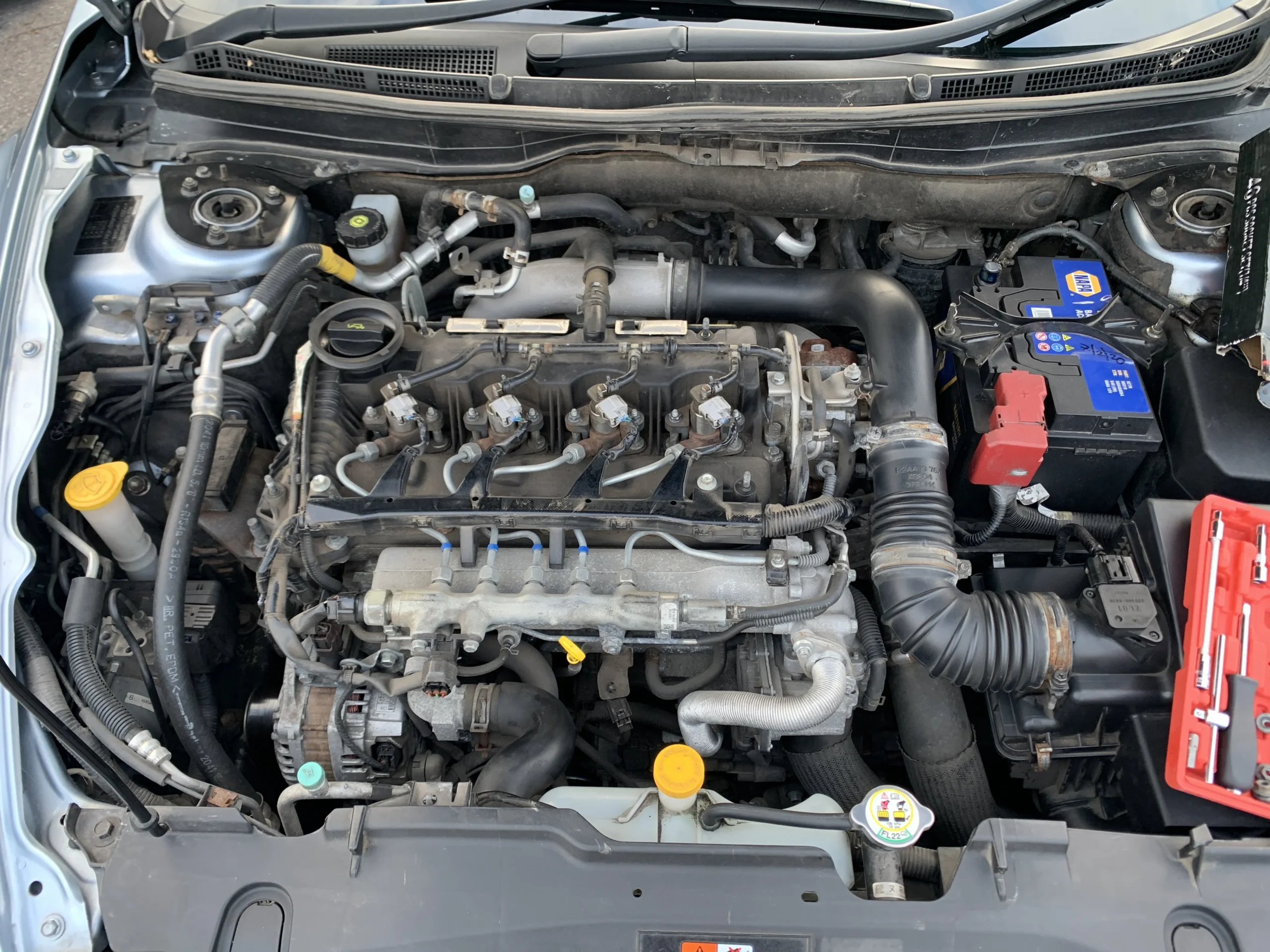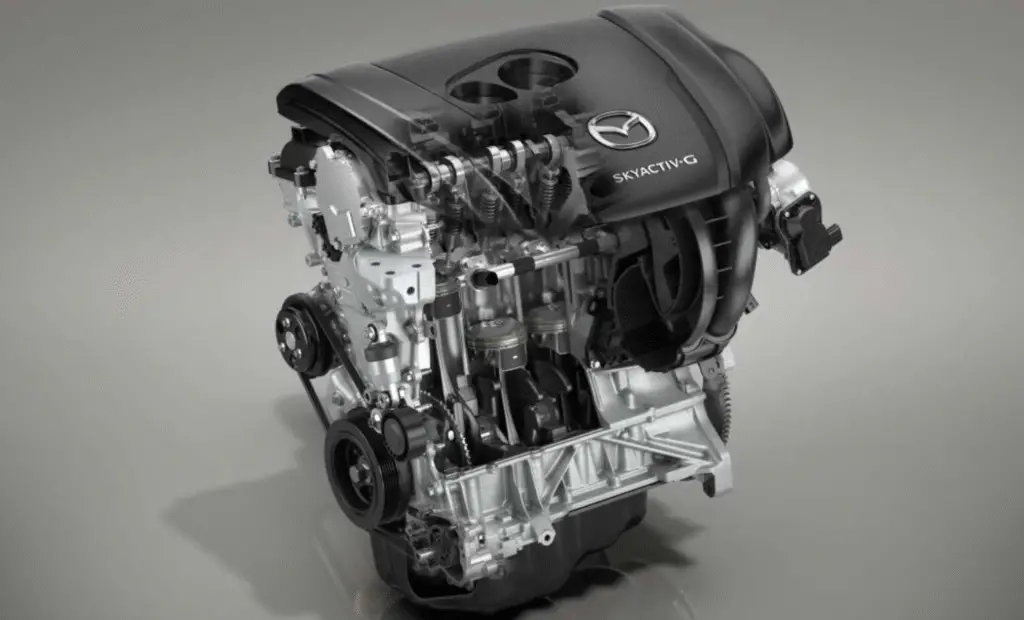Mazda 2.5 engine problems can include issues like excessive oil consumption, carbon buildup in direct injection engines, timing chain failures, and water pump malfunctions. Regular maintenance, such as timely oil changes and using high-quality fuel, can help mitigate these issues and keep the engine running smoothly.
The Mazda 2.5L engine, particularly the Skyactiv-G 2.5 engine, has been a part of Mazda’s lineup for several years, powering vehicles like the Mazda3, Mazda6, and Mazda CX-5. Known for its fuel efficiency, performance, and smooth driving experience, the Mazda 2.5L engine has earned a reputation for reliability. However, like all engines, it’s not without its issues.
This article we will provide an in-depth look at the most common problems that owners of the Mazda 2.5 engine may encounter, the causes of these problems, and the best solutions to keep your engine running smoothly.

Contents
Common Mazda 2.5 Engine Problems
The Mazda 2.5 engine, while generally reliable, is not without its common issues. Being aware of these problems can help owners address them early and prevent costly repairs down the road.
1. Excessive Oil Consumption
One of the most commonly reported issues with the Mazda 2.5 engine is excessive oil consumption. This problem has been especially prevalent in some models from 2014 to 2018, including the Mazda3 and Mazda CX-5. Owners have noticed that their engines burn oil at a higher rate than expected, leading to the need for more frequent oil top-ups and occasional oil changes.
Symptoms of Excessive Oil Consumption:
- Oil warning light turning on frequently
- A noticeable decrease in oil levels between oil changes
- Blue smoke coming out of the exhaust
- Rough engine performance due to low oil levels
Potential Causes:
- Worn piston rings: When the piston rings wear out, oil can seep into the combustion chamber and burn along with the fuel, leading to excessive oil consumption.
- Faulty valve seals: The valve seals control the oil flow into the engine. If they wear out, oil can leak into the combustion chamber and burn off, contributing to high oil consumption.
- PCV (Positive Crankcase Ventilation) valve failure: The PCV valve helps relieve excess pressure in the engine. If it malfunctions, it can increase the consumption of oil.
Solutions:
- Monitor the oil levels regularly and top up when needed.
- Replace worn piston rings or faulty valve seals if necessary.
- If you notice a persistent oil consumption issue, consult a mechanic to diagnose the problem and replace any defective components.
2. Carbon Buildup on Intake Valves (Direct Injection Engines)
Many models of the Mazda 2.5L engine are equipped with direct fuel injection (DFI). While DFI provides better fuel efficiency and performance, it can also lead to carbon buildup on the intake valves. This is because the fuel is injected directly into the combustion chamber, bypassing the intake valves. Over time, carbon deposits accumulate on the valves, affecting engine performance.
Symptoms of Carbon Buildup:
- Rough idling
- Decreased acceleration and power
- Poor fuel economy
- Illuminated check engine light
Potential Causes:
- Direct injection design: In direct injection engines, fuel doesn’t wash over the intake valves, which prevents the buildup of carbon from being cleaned off naturally.
- Low-quality fuel: Using low-quality fuel or fuel additives that are not recommended can lead to more significant carbon buildup over time.
Solutions:
- Perform periodic cleaning of the intake valves to remove carbon buildup. This can be done using specialized cleaning methods like walnut blasting or through the use of chemical cleaners.
- Use high-quality fuel and fuel system additives that help clean the intake valves.
- Regularly perform fuel system maintenance to avoid long-term damage caused by carbon deposits.
3. Timing Chain Issues
Timing chains are an essential part of the engine, ensuring that the camshaft and crankshaft rotate in sync to allow for proper valve operation. In some Mazda 2.5L engines, particularly in models manufactured between 2010 and 2015, the timing chain and its components may wear prematurely. A worn timing chain can lead to engine misfires, rough idling, or even catastrophic engine failure if not addressed in time.
Symptoms of Timing Chain Issues:
- Unusual rattling or clanking noise from the engine, especially on startup
- Poor engine performance or misfires
- Rough idle and hesitation during acceleration
- Illuminated check engine light
Potential Causes:
- Worn or stretched timing chain: Over time, the timing chain can stretch due to high mileage or insufficient lubrication, causing the timing to go out of sync.
- Faulty timing chain tensioner: If the tensioner fails, it can cause the chain to slacken, leading to misfires or noise.
Solutions:
- Regularly inspect the timing chain for signs of wear, especially if the engine is exhibiting unusual noises or performance issues.
- If the timing chain is found to be worn or the tensioner is faulty, replace these components as soon as possible to prevent further damage to the engine.
4. Water Pump Failures
Water pump failure is another issue that has been reported in the Mazda 2.5L engine. The water pump is responsible for circulating coolant throughout the engine to maintain an optimal operating temperature. If the water pump fails, it can cause the engine to overheat, which can lead to severe damage.
Symptoms of Water Pump Failure:
- Engine overheating
- Low coolant levels or coolant leaks under the vehicle
- Unusual noises coming from the engine bay
Potential Causes:
- Worn water pump: Over time, the internal components of the water pump can wear out, leading to coolant leakage or a failure to circulate coolant properly.
- Clogged radiator or hoses: A clogged radiator or hoses can cause a drop in coolant pressure, leading to pump failure.
Solutions:
- Regularly inspect the water pump and cooling system components for signs of leaks or wear.
- If the water pump fails, replace it immediately to avoid engine overheating and potential damage.
- Ensure the coolant system is flushed and cleaned at the recommended intervals to prevent blockages.
5. Oil Leaks
Oil leaks are a common issue with the Mazda 2.5L engine, particularly in older models or those with higher mileage. Oil leaks can occur from various engine seals, including the valve cover gasket, oil pan gasket, or rear main seal.
Symptoms of Oil Leaks:
- Oil spots on the ground where the vehicle is parked
- Oil warning light coming on
- Smell of burning oil from the engine bay
Potential Causes:
- Worn gaskets or seals: Over time, gaskets and seals can degrade, leading to oil leaks.
- Improper installation or component wear: If parts such as the oil pan or valve cover are improperly installed or worn, they can cause leaks.
Solutions:
- Regularly inspect the engine for any signs of oil leaks.
- Replace worn or damaged gaskets and seals promptly to prevent further leaks and engine damage.
- Ensure that oil is changed regularly and the correct type of oil is used.

Maintenance Tips for the Mazda 2.5 Engine
To prevent and mitigate common issues with the Mazda 2.5 engine, here are some essential maintenance tips:
- Regular Oil Changes: Change your oil at the recommended intervals to keep the engine properly lubricated and to prevent oil consumption or timing chain issues.
- Use High-Quality Fuel: Using premium fuel can help reduce carbon buildup and prevent engine knock or misfires.
- Monitor Coolant Levels: Always check coolant levels and inspect the cooling system for leaks to prevent overheating.
- Replace Timing Chain Components: Regularly check the timing chain and tensioners, especially if you hear unusual noises or experience poor performance.
- Inspect the Water Pump and Hoses: Ensure the water pump is functioning correctly and check hoses for wear or blockages to maintain proper engine cooling.
Frequently Asked Questions
Here are some FAQs about Mazda 2.5 engine problems –
1. What causes excessive oil consumption in the Mazda 2.5 engine?
Excessive oil consumption is often caused by worn piston rings or faulty valve seals that allow oil to enter the combustion chamber.
2. How can I prevent carbon buildup in my Mazda 2.5 engine?
Using high-quality fuel and performing regular fuel system maintenance can help prevent carbon buildup in direct injection engines.
3. How often should I change the oil in my Mazda 2.5 engine?
Oil should be changed every 5,000 to 7,500 miles, depending on your driving conditions and Mazda’s recommendations.
4. How do I know if my Mazda 2.5 engine has timing chain issues?
Unusual rattling or clanking sounds, especially at startup, poor engine performance, and check engine lights are signs of timing chain issues.
5. What can cause a water pump to fail in the Mazda 2.5 engine?
Water pump failure can result from internal wear, clogged hoses, or overheating due to inadequate coolant flow.
Conclusion
The Mazda 2.5L engine, while generally reliable, can face some common issues that may require attention from owners. By understanding these potential problems, such as excessive oil consumption, carbon buildup, timing chain issues, and water pump failures, Mazda 2.5 owners can take proactive steps to maintain their engines and avoid expensive repairs.